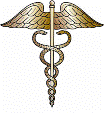
United States Public Health Resources
Date of this Version
2001
Citation
CANCER Supplement January 1, 2001, Volume 91, Number 1
Abstract
Despite the broad advances made in cancer research and interventions in the last quarter of a century, inequality still persists as we confront challenges arising from the unequal burden of cancer among Americans. Some racial and ethnic minorities, people with low incomes, those in rural areas, and other medically underserved populations suffer disproportionately from cancer. We know, for example, that African Americans are about 34% more likely to die of cancer than whites and more than two times more likely to die of cancer than Asian/Pacific Islanders, American Indians, or Hispanics.
Disparities also exist among the major racial and ethnic groups in health-risk behaviors, such as cigarette smoking, and use of clinical preventive services, such as screening for breast, cervical, and colorectal cancers. The Centers for Disease Control and Prevention’s (CDC) Behavioral Risk Factor Surveillance System (BRFSS), which was developed in cooperation with federal, state, and private-sector partners, has equipped us with knowledge of variations in health risks as well as information about differences among racial and ethnic groups for health-risk behaviors. Results from the 1997 BRFSS Survey showed that American Indians/Alaska Natives were most likely among all groups to report cigarette smoking. Hispanic and American Indian/ Alaska Native women were less likely than women in other racial and ethnic groups to use preventive services, such as Papanicolaou testing and mammography. These statistics are disheartening and remind us that much work remains to remove the disproportionate burden of cancer among our nation’s diverse populations.
Achieving better cancer control within minority and underserved populations in the United States is an important CDC goal. In its commitment to reducing disparities in the nation’s cancer burden, CDC focuses its cancer control resources on support for surveillance systems that provide high quality cancer data for all Americans and on the design and implementation of interventions that promote the prevention and early detection of cancer, with emphasis on the underserved.
Cancer Surveillance
Surveillance activities are at the foundation of public health practice, and they are the primary way we gain an understanding of cancer’s effect on populations. Chief among CDC’s cancer surveillance systems is the National Program of Cancer Registries (NPCR), which was established by Congress in 1992. Through the NPCR, CDC supports complete, timely, and standardized reporting of cancer data—within a state, between states, and between regions. CDC’s NPCR will be an effective mechanism for monitoring cancer trends and will be an invaluable data source for identifying the burden of disease among racial and ethnic minority populations. NPCR data also will be helpful in directing cancer control efforts and research, developing and evaluating prevention and control programs, and ensuring that health resources are directed where they are most needed.
The NPCR complements the National Cancer Institute’s (NCI) Surveillance, Epidemiology, and End Results (SEER) program. The SEER program gathers in-depth cancer data on the population in five states (Connecticut, Hawaii, Iowa, New Mexico, and Utah); in the metropolitan areas of Atlanta, Detroit, Los Angeles, San Francisco-Oakland, San Jose-Monterey, and Seattle-Puget Sound; and in selected populations of American Indians in Arizona, Alaska Natives in Alaska, and residents of 10 rural counties in Georgia, covering about 14% of the U.S. population. NPCR supports central cancer registries in 45 states, 3 territories, and the District of Columbia; 45 of these areas are enhancing established registries, and 4 are developing and implementing registries in areas where none existed previously or where registries operated only in a limited capacity (Fig. 1). SEER-supported regional registries provide their data to the NPCR-supported state central registry. The NPCR covers 96% of the U.S. population.

